Xeodrifter is a bite-sized non-linear platformer that takes everything the genre does best—open-ended exploration, satisfying accumulation of power, and skill-based boss fights—and distills it all down into a lean package. I play as a nameless interplanetary explorer in a red spacesuit whose ship is damaged by a rogue asteroid, shattering the crystal that powers its hyperspeed engines. Now stranded in a small stellar system containing four planets, I must guide the player character on a planet-hopping quest in search of a new power core so they can fix their ship and continue their journey.

The hardest section in Xeodrifter is its beginning. It opens on a map showing a system of four planets. I can steer the player character’s ship between these four planets and land on them in any order I choose. The catch is there is a specific order in which these planets must be explored; we won’t get far in three of them without a vital tool hidden on the fourth. With absolutely no knowledge or guidance on which planet this tool might be found, I have no choice but to pick one at random and see how far we can get.
Though I am without guidance on where we need to go, our cursory visits to each planet are mercifully brief. Within minutes, if not seconds, of setting foot on a new planet we discover apparently impassable barriers. An obsidian pillar sealing a passageway. A pool of deep, turquoise water in which the player character can only float. A long tunnel of boiling, viscous matter which is damaging to touch. These are the kinds of obstacles which, in familiar non-linear platformer fashion, I must find new tools and skills the player character may use to surmount.
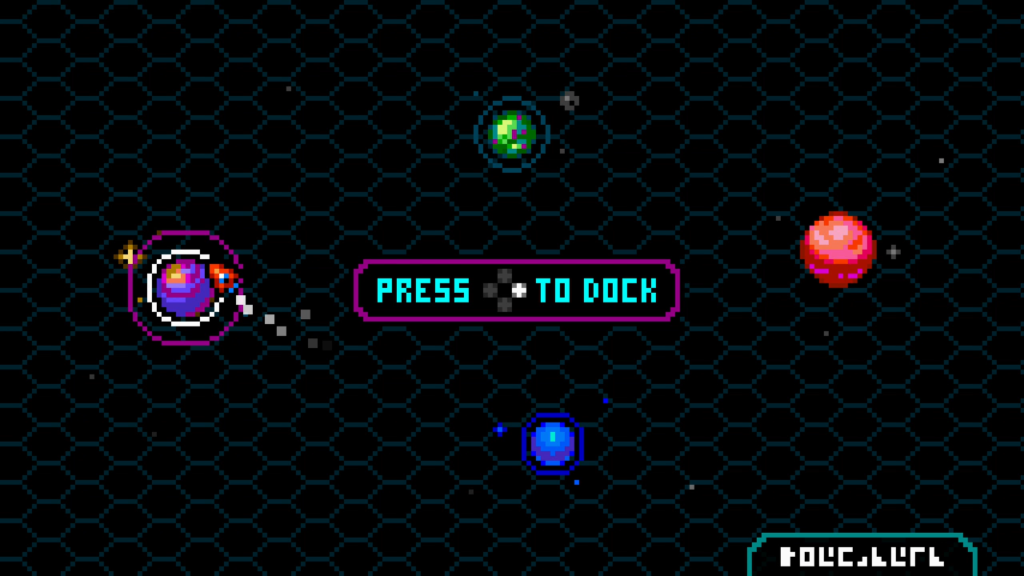
After a few short minutes of frantic planet-hopping, I find one with a path we can explore unimpeded. It leads to the first boss fight.
Xeodrifter has only one boss which is fought many times over its course. This boss is a huge bug, twenty times the size of the player character, protected by a heavy carapace and with wicked horns protruding from its plated face. The first battle with it is probably the most difficult; the player character’s measly three starting hit points make every mistake costly and their weak weapon ensures the fight will be long. Luckily there is a checkpoint directly outside the boss’ chamber. Once we make it to this doorstep, we may keep trying until we finally topple the creature.
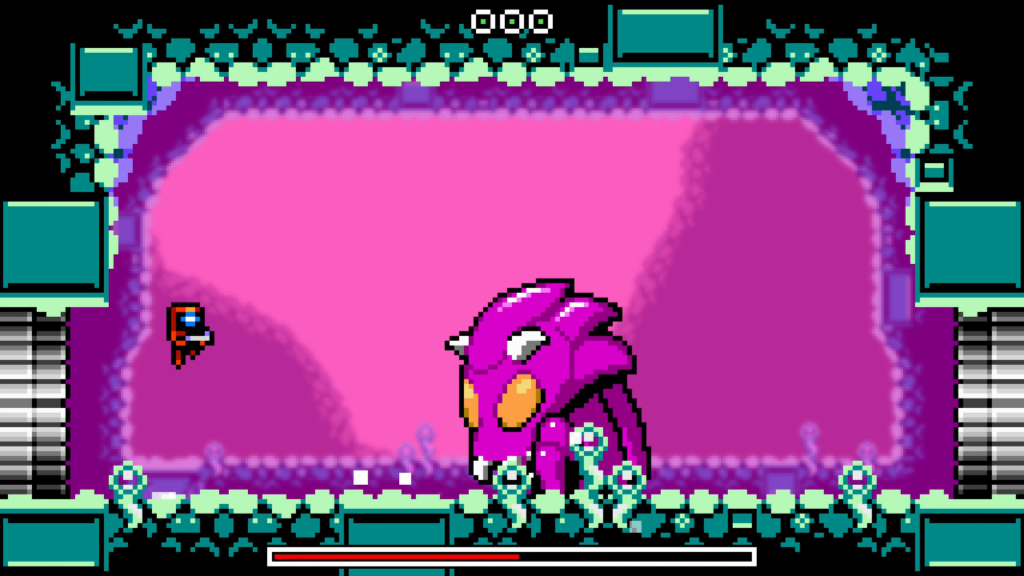
Defeating the boss is a simple matter of practice and skill. The first time it is fought, it possesses three different attacks, each telegraphed by unique wind-up animations. When it rears back, seeming to impossibly contract its body like an accordion, it is about to charge forward. When it crouches low, it is about to jump in an arc from one side of the arena to another. When it stands motionless, it unleashes waves of projectiles. The boss simply cannot be defeated until I recognize these wind-up animations and dodge the ensuing attack.
A battle with this creature signposts every step of the adventure. Each time it is encountered, it adds a new layer to the battle, until the final encounter when it has almost a dozen abilities at its disposal. Whether it’s the same creature with a grudge fought many times on every planet or many examples of the local cluster’s apex predator isn’t clear, but I need to overcome this boss again and again to accomplish the player character’s goal.
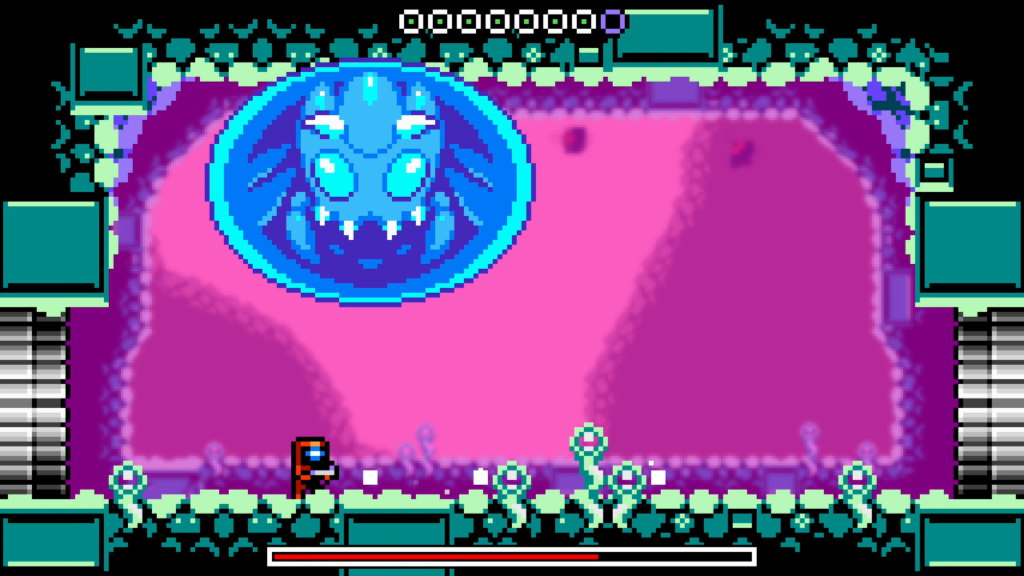
Each time we defeat the boss, the player character earns a new ability. In familiar non-linear platformer fashion, each ability lets them bypass obstacles that previously impeded them, increasing the number of spaces they may explore on each planet. What is less familiar is the abilities the player character learns. There is no double jumping to be found here.
The first two abilities the player character learns are the most unusual and transformative. They first learn to summon a submarine, giving them access to underwater spaces on each of the four planets. The second ability lets them jump between spaces in the screen’s foreground and the background. When I first see these background spaces, I dismiss them as decorative elements. They are filled with platforms and enemies, but I don’t expect the player character will actually venture there. The first time I jump into one of these background spaces is Xeodrifter’s most delightful moment.
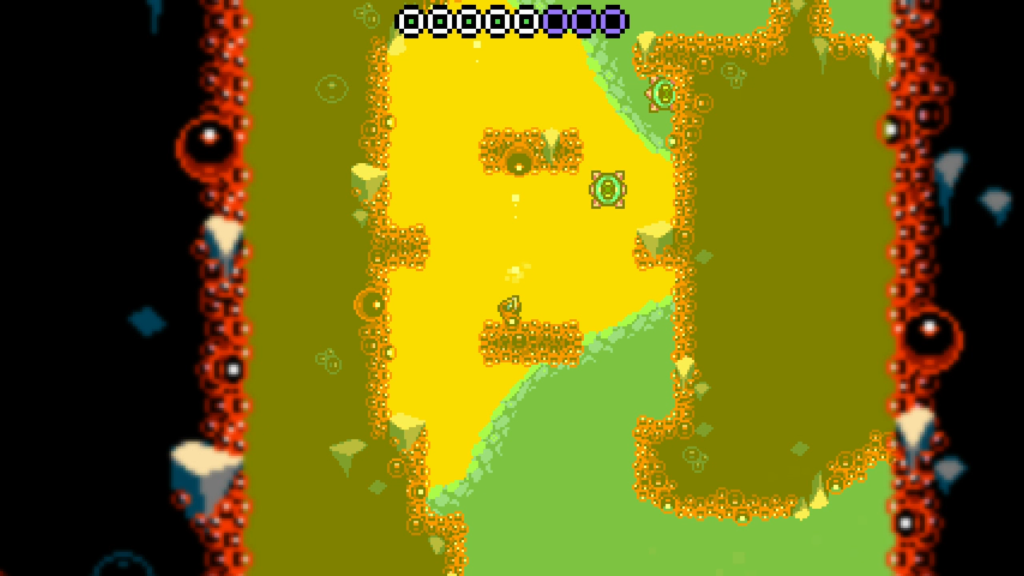
The final abilities send the player character rocketing across the screen, first along the ground to the left and right, then later straight up into the air. These can be combined with the space-jumping element to create some of Xeodrifter’s most challenging platforming sequences. To access some of the planets’ most elusive areas I must skillfully direct the player character to shift between the foreground and background without losing their momentum. While this takes some practice, there is thankfully no point with a fatal punishment for failure. I am allowed ample room for mistakes.
Aside from allowing the player character to reach deeper spaces to rechallenge the recurring boss, these new abilities also allow them to claim health and weapon upgrades strewn across all four areas. The health upgrades are vital as the boss battles become more and more intricate and the local fauna on each planet becomes increasingly aggressive and deadly.
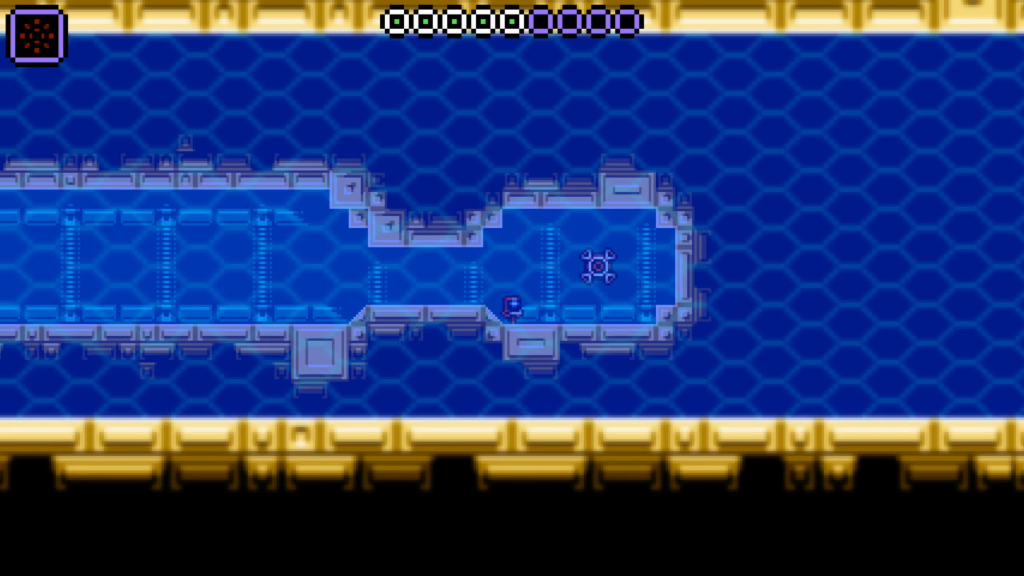
The weapon upgrades are where Xeodrifter takes the most interesting departure from non-linear platformer traditions. Instead of different types of energy projectiles to expel from the player character’s arm-mounted cannon, they have a basic weapon which can be modified from the status screen.
For every weapon upgrade I find, I can add points to the weapon’s five different behaviors. I can make projectiles fire faster, move faster, move in a wave pattern, fire multiple projectiles at once in a spreading pattern, or deal more damage. The choices I make are not permanent; I can add or subtract points from any category to experiment or change strategies on the fly. There are twelve upgrade points hidden across the four planets, but thirty different upgrade ranks, forcing me to make tough choices based on strategy and playstyle instead of maxing everything and becoming an unstoppable killing machine.
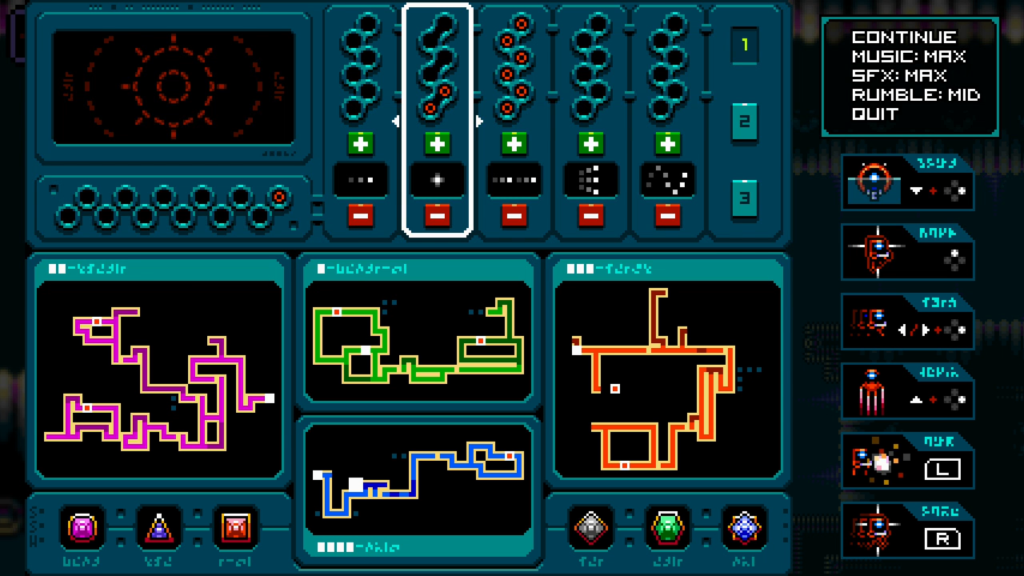
As pleased as I am with Xeodrifter’s original ideas, it is its simplicity for which I admire it most. The single boss, fought many times with new complications added each time, is immensely satisfying to defeat. That I feel it becomes easier to defeat with each encounter is not a criticism. It is an expression of my growing mastery of the mechanics. The single weapon, rather than being boring to wield, can be bent to suit the present situation, firing fast and hard for slow, powerful enemies or wide and scattering for small, quick ones.
Xeodrifter is so successful in its simplicity that I am ultimately left with only minor complaints to highlight. Some of the weapon and health upgrades are hidden behind fake walls, forcing me to plow the player character face-first into every surface to make sure there’s nothing hidden there. The sound of the weapon firing becomes grating quickly, especially since I am encouraged to fire it at nearly all times to hit enemies just as they appear onscreen. The flying bug heads on the red planet are difficult to hit, difficult to avoid, and are demonic in their power and their desire to pursue and devour the player character. They’re a truly aggravating opponent. That’s about it. Xeodrifter is too expertly streamlined for me to have many negative experiences.
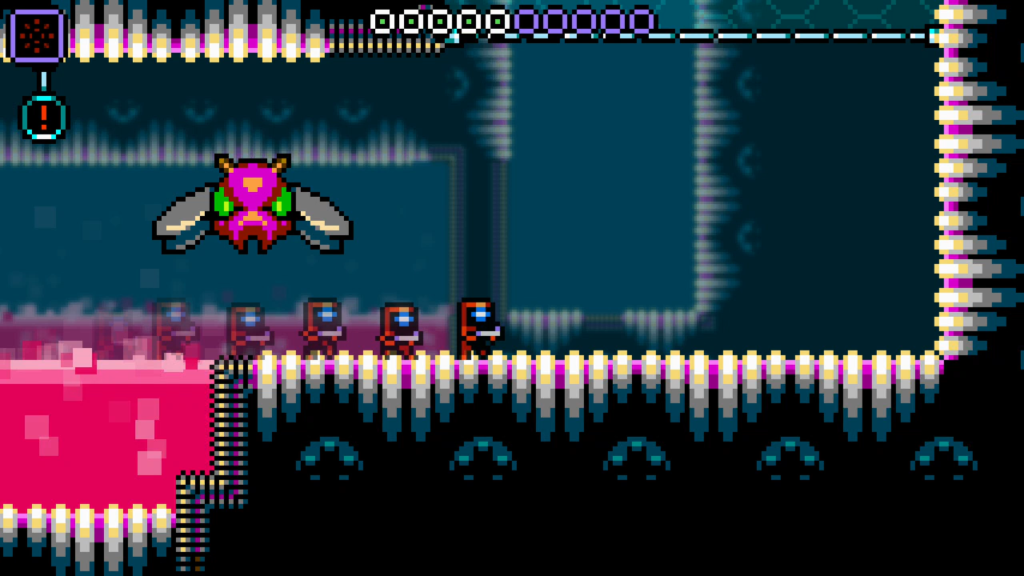
If I were to forget why non-linear platformers are some of my favorite kinds of videogames, I would only need to sit down with Xeodrifter to be reminded in a brisk two to three hours of playtime. There is no fat to be found here. It’s everything I love about the genre. I love the satisfaction of exploring and mastering an alien environment. I love the sensation of growing power as a result of my effort. It has none of the things that have become the genre’s bores and cliches. Instead of pushing the boundaries of non-linear platforming, Xeodrifter refines them to near-perfection. It’s fast. It’s snappy. It’s efficient. It’s great. Of course I recommend it.